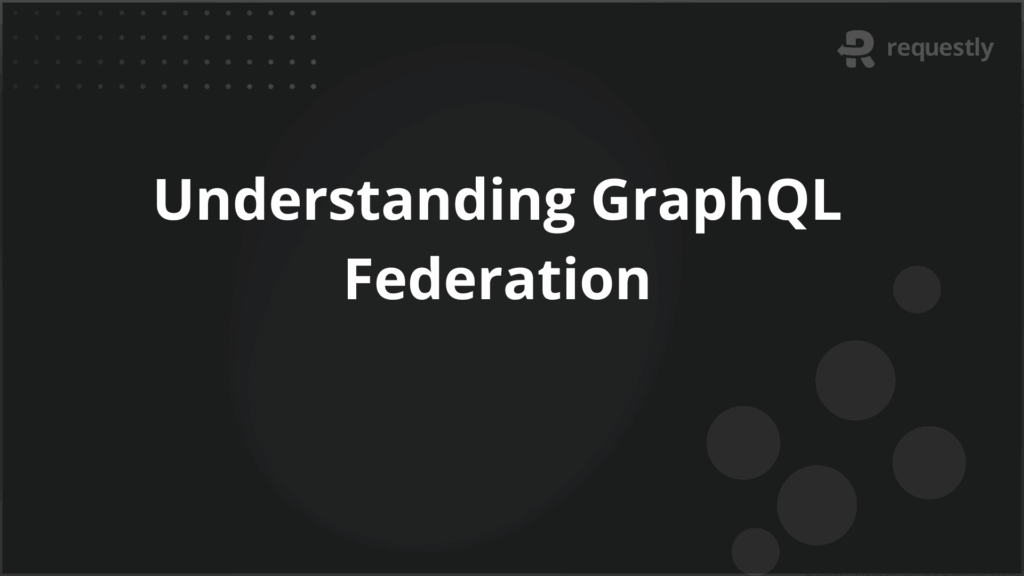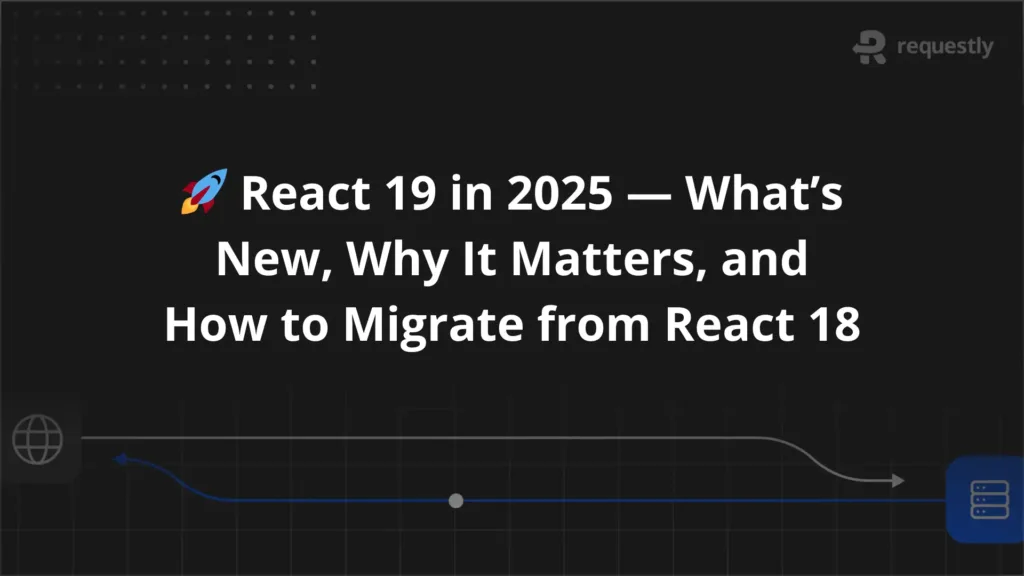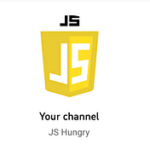Understanding GraphQL Federation


As organizations scale, building and maintaining a large, monolithic GraphQL API becomes increasingly challenging. Teams working on different domains often face deployment conflicts, slower development cycles, and complex schemas that hinder agility.
GraphQL Federation offers a solution by enabling the composition of multiple independently managed GraphQL services, called subgraphs, into a single, unified API known as the supergraph.
The article explores the core concepts, workflow, benefits, operational considerations, challenges, and practical debugging techniques of GraphQL Federation.
What Is GraphQL Federation?
GraphQL Federation is an architectural pattern that enables combining multiple independent GraphQL services, called subgraphs, into a single, unified API known as the supergraph. Unlike traditional monolithic GraphQL APIs, federation allows teams to develop, deploy, and maintain their parts of the schema autonomously while contributing to a shared data graph.
At its core, federation orchestrates distributed, domain-specific GraphQL services through a gateway (or router) that composes individual schemas into one comprehensive graph. This enables clients to interact with a single endpoint and query data seamlessly across multiple services.
Operational Aspects and Monitoring
Operating a federated GraphQL architecture involves maintaining the health, performance, and security of a distributed system that spans multiple independent services (subgraphs) and a central gateway.
- Centralized Gateway Monitoring: The GraphQL gateway serves as the single entry point and is responsible for query planning, request delegation, and response aggregation. Monitoring gateway metrics such as query latency, error rates, and throughput is critical to understanding overall API performance.
- Subgraph Observability: Each subgraph operates independently and requires monitoring of its schema health, response times, and error tracking. Maintaining visibility into individual subgraph performance helps isolate and resolve issues without impacting the entire graph.
- Schema Composition and Validation: Continuous validation of federated schema composition ensures that subgraphs integrate correctly without conflicts or breaking changes. Automated schema registry and composition tools can help track schema versions and enforce compatibility.
- Logging and Distributed Tracing: Implementing distributed tracing across the gateway and subgraphs enables detailed insights into query execution paths, helping identify bottlenecks or failures in specific services. Logs from all components should be centralized for unified troubleshooting.
- Authentication and Authorization: The gateway typically enforces security policies such as JWT validation and role-based access controls (RBAC), protecting the unified API while subgraphs may handle domain-specific authorization.
- Performance Optimization: Monitoring helps detect hotspots and optimize query resolution strategies, caching, and resource usage across federated services to meet SLAs and user expectations.
Effective operational management and monitoring tools are crucial to maintaining reliability, debugging complex distributed queries, and proactively handling issues in federated GraphQL deployments.
How GraphQL Federation Works
GraphQL Federation enables multiple autonomous GraphQL services, called subgraphs, to compose a single unified API called the supergraph. Each subgraph operates independently with its own schema and resolvers, focusing on a specific domain or business capability.
When a client sends a query, it hits the central component known as the gateway or router. The gateway maintains a composed schema built by merging all subgraph schemas and uses this schema to interpret incoming queries.
The gateway decomposes the client query into subqueries targeting the relevant subgraphs based on which service owns which parts of the schema. It intelligently plans and routes these subqueries to the respective subgraphs, executes them, and collects the partial responses.
Finally, the gateway stitches the results from each subgraph into a single response that matches the structure of the original query, abstracting the distributed nature of the backend from the client.
To coordinate shared data, federation uses special directives like @key, @external, @requires, and @extends in subgraph schemas to define relationships and ownership of types and fields that span services.
This architecture allows subgraphs to evolve independently, supports scaling teams and infrastructure, and delivers a seamless, single GraphQL endpoint experience to clients.
Benefits of GraphQL Federation
GraphQL Federation offers significant advantages over monolithic GraphQL APIs and traditional schema stitching, enabling scalable, maintainable, and flexible API architectures.
- Team Autonomy and Domain Focus: Each team manages its own subgraph independently, allowing parallel development, faster iteration, and reduced coordination overhead.
- Scalability and Performance: Subgraphs can be deployed and scaled individually based on their specific load and performance requirements, optimizing resource utilization.
- Unified API Experience: Federation provides clients with a single, cohesive GraphQL endpoint that abstracts the complexity of multiple backend services into one seamless schema.
- Service Integrity and Schema Validation: Schema composition validates integration between subgraphs, preventing conflicts and ensuring consistency across the entire federated graph.
- Flexibility in Technology Stack: Teams can choose different languages and frameworks for their subgraphs without impacting the unified API, supporting diverse technical needs.
- Simplified Client Interaction: Clients can request exactly the data needed in a single query, leveraging GraphQL’s strengths while federation handles query distribution and stitching.
- Improved Development Velocity: By decentralizing schema ownership and enabling independent deployments, federation accelerates the delivery of new features and updates.
These benefits make GraphQL Federation a powerful pattern for large-scale, distributed organizations seeking to optimize collaboration and API scalability while preserving a clean, unified developer experience.
Challenges of GraphQL Federation
While GraphQL Federation brings powerful benefits for scaling and modularizing APIs, it also introduces a set of technical and operational challenges that teams must carefully manage to ensure smooth implementation and ongoing maintenance.
- Increased Complexity: Federation introduces architectural complexity due to distributed graph management, cross-service queries, and schema composition, requiring careful coordination.
- Schema Coordination: Managing breaking changes across multiple subgraphs demands strict schema governance to avoid conflicts and ensure backward compatibility.
- Debugging Difficulties: Tracing issues that span multiple subgraphs and the gateway can be challenging without comprehensive distributed tracing and monitoring tools.
- Performance Overhead: Query planning and response aggregation at the gateway may introduce latency, especially for complex queries involving many subgraphs.
- Versioning and Deployment: Coordinating deployments while maintaining consistent schema versions across teams is complex and requires automation and robust CI/CD pipelines.
Best Practices for using GraphQL Federation
Adopting GraphQL Federation successfully requires following established best practices to manage complexity, ensure scalability, and maintain a high-quality unified API across distributed teams and services.
- Domain-Driven Schema Design: Clearly define ownership boundaries around domains to minimize interdependencies and improve subgraph autonomy.
- Use a Schema Registry: Automate schema validation, registry, and composition to catch conflicts early and maintain a single source of truth.
- Implement Monitoring and Tracing: Use distributed tracing, logging, and monitoring to observe query flow, quickly identify bottlenecks, and troubleshoot errors.
- Gradual Federation Adoption: Start by federating core independent domains and expand iteratively as confidence and tooling improve.
- Establish Governance and Communication: Define policies for schema changes, enforce versioning rules, and promote collaboration across teams managing subgraphs.
- Optimize Query Planning: Profile and optimize gateway query plans to reduce latency, and consider caching frequently accessed data across the federation.
Use Cases of GraphQL Federation
GraphQL Federation is widely adopted in scenarios where modularity, scalability, and team autonomy are critical for managing complex APIs composed of multiple services. Key use cases include:
- Microservices Integration: Federation enables unifying numerous microservices behind a single GraphQL API, allowing clients to query multiple domains (e.g., users, products, orders) seamlessly with one request.
- Large-Scale Enterprise APIs: Organizations with multiple specialized teams can allow each to own and evolve their domain-specific subgraphs while providing a unified API to external consumers.
- Legacy System Modernization: Federation allows gradual decomposition of monolithic GraphQL endpoints or legacy backends into independently manageable services without breaking frontends.
- Multi-product Platforms: Platforms with diverse product lines or services (such as travel apps with users, flights, hotels) can federate distinct API domains for better maintainability and evolution.
- Cross-organization API Collaboration: Federation supports API orchestration across distinct teams or departments, helping reduce coordination overhead and enabling autonomous development.
- Complex Data Ecosystems: Federation handles scenarios requiring rich data relationships across heterogeneous data sources, abstracting complexity for API consumers.
When Not to Use Federation
While GraphQL Federation offers powerful benefits for scaling complex APIs, it may not be the ideal choice for all projects. Federation introduces additional architectural complexity, infrastructure overhead, and operational demands that might outweigh its advantages in certain scenarios.
- Small or Simple APIs: If an application or service has a limited number of domains or data sources, a monolithic GraphQL server or simpler API structure is often easier to develop, deploy, and maintain.
- Limited Team Size or Resources: Federation requires coordination across multiple teams and services. Small teams or organizations without sufficient resources and expertise might struggle with the complexity and maintenance overhead.
- Low Query Complexity: Applications with straightforward data fetching needs or minimal inter-service dependencies may find federation adds unnecessary latency and complexity.
- Rapid Prototyping or MVPs: For early-stage projects requiring quick iteration, federation’s setup and governance costs may delay development velocity rather than accelerate it.
- Infrastructural Constraints: Federation demands a reliable gateway, robust schema composition tooling, and comprehensive monitoring systems. Without appropriate infrastructure, adopting federation can increase operational risks.
In these cases, simpler GraphQL architectures or even REST APIs may provide a more pragmatic and cost-effective solution than the complexity introduced by federation.
Debug Federated APIs with Requestly HTTP Interceptor
Managing and debugging federated GraphQL APIs can be complex due to the distributed nature of multiple subgraphs and the central gateway. Requestly HTTP Interceptor provides an advanced, user-friendly solution to streamline debugging, testing, and modifying GraphQL network requests in real time across federated services.
Key Features for Federated APIs
- Intercept and Modify Requests and Responses: Requestly by BrowserStack allows developers to capture and alter HTTP requests and responses on the fly. This capability makes it easy to simulate various scenarios by mocking subgraph responses, modifying headers, or redirecting requests without changing backend code.
- Real-Time API Testing: By dynamically modifying queries or injecting custom scripts, teams can test the behavior of different subgraphs, validate federated schema interactions, and debug complex query flows efficiently.
- Session Recording and Collaboration: Requestly’s session recording feature captures all relevant network traffic and interactions, enabling teams to share debugging sessions seamlessly. This accelerates issue reproduction and collaborative troubleshooting across distributed developer teams.
- Enterprise-Ready Security: The tool ensures secure, private operations and supports team-focused workflows with comprehensive compliance features, enabling adoption in enterprise GraphQL projects.
By integrating Requestly HTTP Interceptor into federated GraphQL development workflows, organizations can enhance their operational efficiency, speed up debugging cycles, and maintain higher API stability. This makes handling the complexity of federated queries and schema composition more manageable and transparent.
Conclusion
GraphQL Federation revolutionizes API architecture by enabling the seamless composition of multiple independent GraphQL services into a single, unified graph. This approach empowers teams to build scalable, modular APIs that foster autonomy and rapid development without sacrificing a cohesive client experience. While federation introduces additional complexity and operational considerations, adopting best practices and leveraging modern tooling can effectively address these challenges.
Tools like Requestly HTTP Interceptor enhance the development and debugging experience by providing powerful capabilities to intercept, modify, and monitor GraphQL requests and responses across federated services. This facilitates faster troubleshooting, testing, and collaboration, making federation more manageable and reliable.
Overall, GraphQL Federation, combined with robust operational strategies and advanced developer tools, offers a future-ready solution for building flexible, maintainable, and scalable APIs in complex, multi-team environments.

Contents
- What Is GraphQL Federation?
- Operational Aspects and Monitoring
- How GraphQL Federation Works
- Benefits of GraphQL Federation
- Challenges of GraphQL Federation
- Best Practices for using GraphQL Federation
- Use Cases of GraphQL Federation
- When Not to Use Federation
- Debug Federated APIs with Requestly HTTP Interceptor
- Conclusion
Subscribe for latest updates
Share this article
Related posts






















